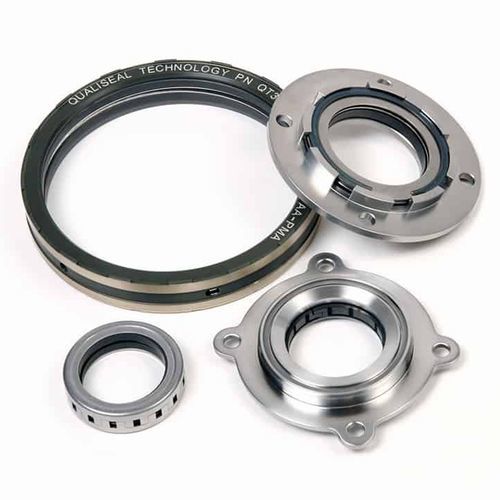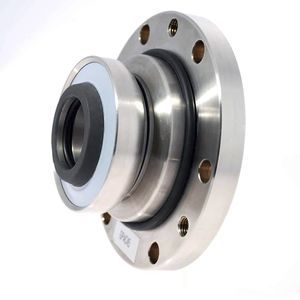
- Components - Spare Parts
- Engine Power
- Carbon seal
- TECHNETICS GROUP
Carbon seal for aircraftspring

Add to favorites
Compare this product
fo_shop_gate_exact_title
Characteristics
- Material
- carbon
- Applications
- for aircraft
- Other characteristics
- spring
- Temperature limit
Min.: -73 °C
(-99 °F)Max.: 1,093 °C
(1,999 °F)- Pressure limit
100 psi
Description
In certain extreme applications, a part made of individual segments may meet your critical performance requirements better than a single-piece unit.
Segmented seals ride directly along the shaft and are primarily used in low-pressure applications.
These seals contain a series of segmented carbon rings which contact the shaft or rotor. Segments inside the seal housing are kept in the proper location by anti-rotation keys or pins. A secondary seal is formed by the axial spring loading of the seal rings against the internal surface of the housing face. During movement, a continuous seal is always in contact with either the primary or secondary sealing surfaces.
PRODUCT APPLICATIONS
Aerospace Industry
Industrial Industry
Ideal For:
Gas seals and for sealing low-pressure liquids
FEATURES & BENEFITS
Benefits:
Tolerance to unlimited shaft axial movement
Prevents oil and contaminant migration into the process gas side
Leakage rates remain constant over the life of the seal
Features:
Rides directly along the shaft
Special gap segments permit the seal to adjust dimensionally for minimal leakage
Compression and garter springs ensure that segments remain in contact with mating surfaces during low delta pressure and shutdown conditions
Design Configurations:
Various seal ring segment configurations
Pressure-balanced segments
Fractured rings
Multiple seal labyrinth
Internally pressurized seal
Internally vented seal
VIDEO
Catalogs
No catalogs are available for this product.
See all of TECHNETICS GROUP‘s catalogs*Prices are pre-tax. They exclude delivery charges and customs duties and do not include additional charges for installation or activation options. Prices are indicative only and may vary by country, with changes to the cost of raw materials and exchange rates.





